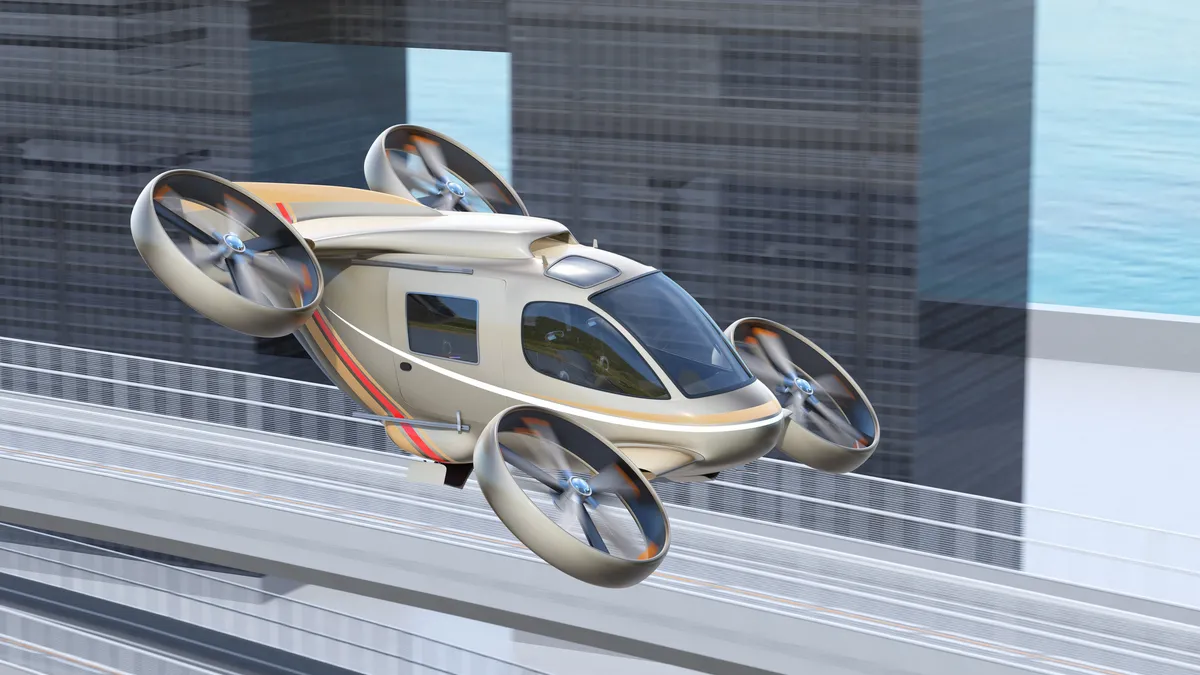By 2035, the advanced air mobility market, including eVTOL aircraft, will be a $115 billion business in the U.S., according to Deloitte. The consulting firm called it “the next disruption in aviation and aerospace.”
That view is shared by François Chopard, co-founder and CEO of Starburst, a global aerospace accelerator that helps connect startups with other relevant companies, mentors entrepreneurs, provides consulting services and invests in certain projects.
Chopard began his career as an engineer at Airbus before working as an engineering consultant for several firms, including one he founded, and launching Starburst in 2012. Smart Cities Dive spoke with him about the nascent urban air mobility industry and how he sees cities evolving around it.
The following interview has been edited for length and clarity.
SMART CITIES DIVE: Why did you decide to form this accelerator?
FRANÇOIS CHOPARD: I thought that there was a coming wave of disruptions, of innovation in the aerospace sector. At the beginning, we were only scouting 50 startups per year. Now, we discover 3,000 new startups every year, and so far we have invested in approximately 120 startups.
When can we expect to see these advanced air mobility services in our cities?
Five years ago, I was very bullish, [but] we are still years away, maybe 10 or 15 [years]. There's a lot of challenges. The main one right now is certification and regulation. Regulation has slowed down the process.
We also hear a lot about delivery drones. Where do those stand?
We thought that it would go very fast, at least on the drone side, because there's no passenger, no pilot. But it is still slow. One of the reasons is that these drones are very hard to certify to the aviation standard.
What are air mobility companies doing now to move the industry forward?
The industry is looking at the routes that can be quickly and best optimized. [For example], from the airport to anywhere downtown. Also, anything related with health and security. [Companies are] starting to map landing zones [and creating] digital twins of cities with maximum accuracy.
What do cities need to do to prepare for this new era of urban aviation?
We need to build a lot of airports, and it's not that easy. Usually, there's a discussion about noise and the impact of an airport to the neighborhood, so the city has to be involved because it’s the one granting authorization to land.
Also, these [eVTOL aircraft] require a massive amount of energy to recharge, or hydrogen infrastructure [to refuel].
How will air taxis change cities as we know them now?
It's going to disrupt the car. At some point, you're not going to need your car anymore. We are in an era of multimodality. You look on your phone and [decide whether to] take an electric scooter, or a bike, or an Uber, or a subway or bus.
The way I see it, we should not be using cars on roads. Roads should be for pedestrians or bikes, but not for cars. Cars should be in the air. That's the vision.












